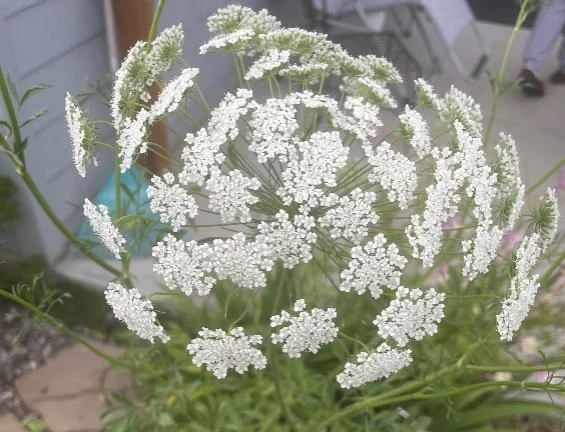In the 18th century, English courtiers referred to this flower as “living lace.” Its delicate lace-like flowers are understandably associated with beauty. Sometimes referred to as 'bishops flower,' Queen Anne’s Lace also symbolizes sanctuary, safety and refuge.
Related to dill and cilantro and often referred to as wild carrot, Queen Anne’s Lace (Daucus Carota) is an invasive plant sometimes confused with poison hemlock. It smells like a carrot and features a ribbed and hairy stem, while the poison hemlock stem is smooth with purple blotches and has an unpleasant odor.
